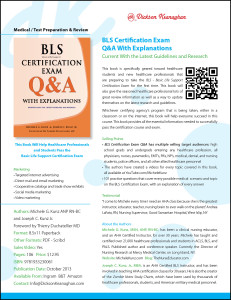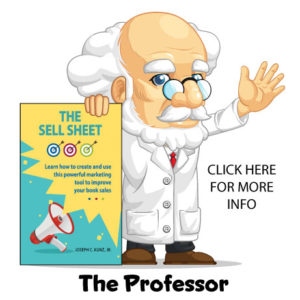Podcast: Play in new window | Download
Subscribe: Apple Podcasts | Spotify | Pandora | RSS | More
Synopsis
Book sell sheets are an essential and integral part of a book’s marketing and publicity plans. For this reason, it is important for you to understand what goes into a great sell sheet. So, to help you get a firm handle on the basics, here is a list of terminology that you will need to know when preparing your sell sheet for your book’s marketing plan.
What You Will Learn
1. You will learn the terminology of the items that will be included on your sell sheet.
2. You will learn marketing terminology that you need to know when deciding how to use your sell sheet.
3.You will learn printing terminology that you need to know before sending your sell sheet to the printer.
Introduction
Book sell sheets are an essential and integral part of a book’s marketing and publicity plans. And having a professional-looking sell sheet can easily and quickly distinguish you and your book from the others. Book retailers, wholesalers, libraries, news outlets, and book reviewers, are all overwhelmed with the number of sell sheets that they receive from authors and publishers.
Therefore, you must design your sell sheet to help you stand out from the crowd. For this reason, it’s important for you to understand what goes into a great sell sheet. So, to help you get a firm handle on the basics, here is a list of terminology that you will need to know when preparing your sell sheet for your book’s marketing plan.
Here are three short lists of typical and essential items:
A. that will be included on your sell sheet;
B. some marketing terms that you need to know when deciding how to use your sell sheet; and,
C. some printing terminology you need to know before sending your document to the printer:
A. Sell sheet terminology for items that are typically included on the sell sheet:
• Author Name: Your name as it will appear on your book’s cover.
• Author Photograph: If you have enough room, include a high-resolution photo; make sure that it is easy to see, and that you look great in it.
• Available From: Ingram, Baker and Taylor, Amazon, for example.
• Call-To-Action: You must tell the reader what you want them to do, such as telling them to visit your website, or your Amazon author page, or YouTube video page, etc.
• Category: List the shelving category (BISG category heading), or subject of your book.
• Co-Author Name: If you have one.
• Description: A short, but enticing, description about your book.
• Foreword Author: This person typically has a well-known name, so if this is true, include it.
• Format: Trade paperback, hardcover, pdf, mobi, etc.
• ISBN 13: The standard book number assigned to your book.
• Marketing Plans: Retailers need to see how much effort and money you will be putting into your book’s marketing, such as for targeted internet. advertising, direct mail and email marketing, co-operative catalogs and trade show exhibits, social media marketing, and video marketing.
• Picture/Image: A high-resolution picture or image of your book.
• Pages: The total number of pages between the covers.
• Price: The cover price.
• Publication Date: The date your book will be available for purchase.
• Quotes/Testimonials/Blurbs: This is important, especially if you have great ones to use.
• Title: The full title, including the sub-title.
• Trim: The dimensions of your book (5.5”x8.5”, 8.5”x11”, 6”x9”).
• Co-Operative Catalogs: Some self-publishing industry groups issue co-op catalogs that get sent to book retailers.
• Direct Mail: Sending your book’s sell sheet directly to book stores and book reviewers, etc.
• Marketing Plans: You need to develop a well-thought-out plan on how you plan to market your book to retailers and consumers.
• Media Kit: You must have a professional-looking media kit ready to send out to any retailer, book reviewer, etc. that asks for it. Include it on your book’s website as a downloadable pdf.
• Press Release: The press release is a way to share information and is saying, “Hey, look at me, I have some news-worthy information to share with you.”
• Sell Sheet: Sometimes called a “one-sheet”, or a “tip-sheet”, or “sales flyer”, is a one-sheet flyer that promotes a book and its author. The major point of a sell sheet is to convey your book’s benefits in a short and concise manner. It is used to help you market your book directly to book buyers.

Sell Sheet Example
• High-Res Photo: This means a large, high-resolution 300 dpi, most commonly in the jpg format; For example, if an image is 600 pixels x 600 pixels at 300 dpi, it would be considered a high-resolution image.
• Paper Size: The typical sell sheet paper size is 8.5” wide x 11” high.
• Paper Weight: The typical paperweight for most sell sheets is 100lb. of text stock; and is typically gloss coated on both sides.
• Print Sides: The typical sell sheet is printed on one side, which the printers designate as 4/0, meaning four-color print on one side, and no print on the back-side.
Conclusion
As you can easily see from this list, there is a lot more to building a sell sheet than most of us might realize at first glance. But by understanding the terminology of sell sheets, you will greatly increase your chances of creating a professional-looking sell sheet that will help you stand out from the crowd, and sell more books.
Providing a professional-looking sell sheet is a quick, effective, and powerful way to make a first great impression. You cannot afford to waste that opportunity. Understanding these marketing terms of art is essential if you have any hope of building a financially successful book.
Questions For Us To Think About And Discuss
1. Have you created a sell sheet for your book?
2. Where, and how, are you using your sell sheet?


